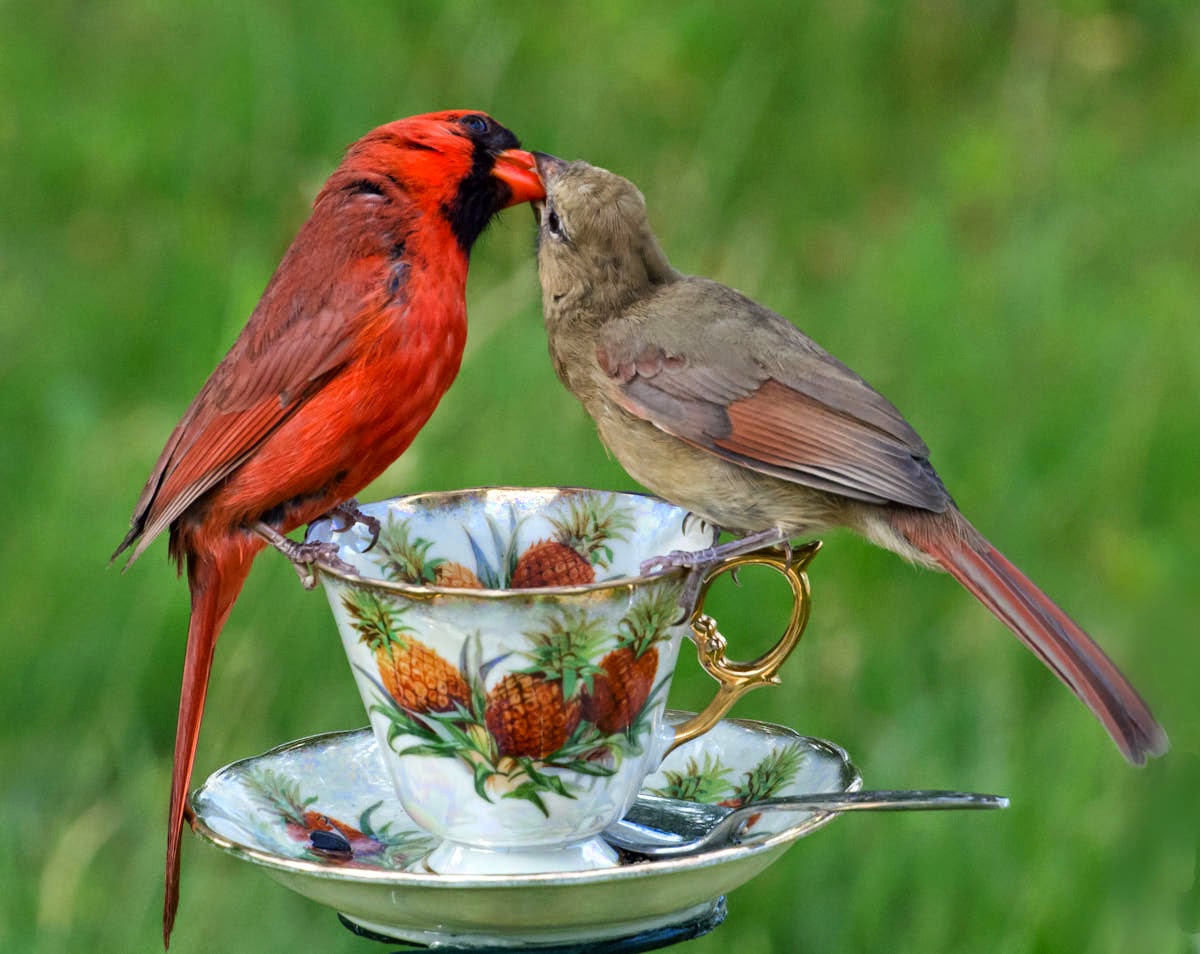Northern Cardinal - Kardynał szkarłatny
Cresskill, New Jersey, 2014
Description
Cardinals belong to a group of birds called "grosbeaks", meaning that they have a thick bill especially adapted for cracking open and eating seeds.Male cardinals, or redbirds as they are sometimes called, can be distinguished from other birds by their bright red color, a black patch around the bill and a red crest on the head. Females are olive-brown with red wings and a red crest.
Cardinals are non-migratory birds. Most cardinals live within a mile of where they were born. Cardinals are song birds and the male uses its call to attract a mate.
Habitat
Look for Northern Cardinals in dense shrubby areas such as forest edges, overgrown fields, hedgerows, backyards, marshy thickets, mesquite, regrown forest, and ornamental landscaping. Cardinals nest in dense foliage and look for conspicuous, fairly high perches for singing. Growth of towns and suburbs across eastern North America has helped the cardinal expand its range northward.
Voice
Besides their red plumage, cardinals are also known for their large repertoire of songs. Unlike most songbirds, cardinals sing all year long. In addition to their famous "cheer, cheer, cheer" song, they often throw in a "wheet, wheet, wheet", or "chew, chew, chew", or a "cheedle, cheedle, cheedle". During courtship, a male is often seen feeding a female. He will continue to feed her while she sits on the nest. While most songbird singing is restricted to the males, female cardinals are known to sing to the male while sitting on the nest.
Diet
The northern cardinal eats a wide variety of seeds (including those from pine trees, smartweed, bindweed, foxtail, dock, thistle, chickweed, button weed, sorrel, and a great variety of grasses), fruits (including grapes, dogwood fruit, blackberries, cherries, and raspberries), and even the buds of some trees (including elm and chokecherry). They also eat insects and, in fact, rely almost exclusively on insects as food for their rapidly growing young. Cardinals are also very common visitors to backyard bird feeders and avidly consume large quantities of sunflower seeds. The northern cardinal is not migratory and will remain even in the most northern parts of its geographic range throughout the winter especially if it is sustained by human-maintained birdfeeders..
Reproduction
Males sometimes bring nest material to the female, who does most of the building. She crushes twigs with her beak until they’re pliable, then turns in the nest to bend the twigs around her body and push them into a cup shape with her feet.
Cardinals usually raise two broods of young a year. They mate in March and again from May to July. The female usually lays four eggs. The eggs take about 12 days to hatch. Cardinals usually build cup-shaped nests in small trees, bushes, shrubs and thick vines that are no more than three to eight feet off the ground. Their nests are made of twigs and bark and are lined with grass, moss and other soft materials. Young cardinals leave the nest after 11 days and they can fly within 20 days.
The male tends to the newly fledged young while the female begins incubating the next clutch of eggs. Producing this large number of young each season helps the cardinal species survive.
One of the dangers cardinals face is becoming a parent to a Brown-headed Cowbird. Cowbirds lay their eggs in other bird's nests and destroy the host's young in the process. The adopted parents then raise the cowbird chick as if it was their own.
Did you know?
Male cardinals are feisty! If they see their reflection, they will fight for hours to scare off the “other bird” that they see as a threat..
While cardinals do not molt into duller plumage in the Fall, some cardinals experience drastic molts that often leave them ‘bald’. For some reason, many cardinals lose all of their head feathers at the same time, leaving a bald bird behind. While in some cases, the loss of feathers are a result of lice or poor nutrition, most of the time, new feathers will grow in on their own to produce the wonderful plumage cardinals are known best for.
Unlike many other songbirds in North America, both the male and female cardinals can sing. Usually, only a male songbird is capable of singing.
On a related note, when a female cardinal sings from the nest, it usually means she’s telling the male she needs more food.
Photos by others.
photo from Birds Guide All about Birds.
Jane Walker's Cards
ourbeautifulworldanduniverse.com
Credits


w.jpg)
w.jpg)
w.jpg)
w.jpg)
w.jpg)




No comments:
Post a Comment